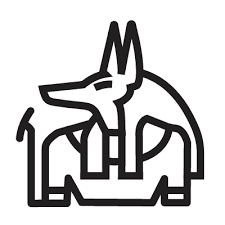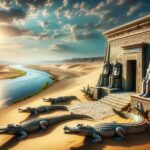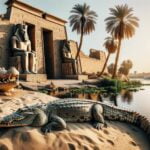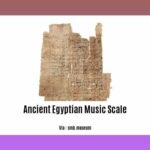Decoding the Anubis Symbol: A Gateway to Ancient Egyptian Beliefs
The Anubis symbol isn’t just a striking image from ancient Egypt; it provides a glimpse into their intricate beliefs about life, death, and the afterlife. More than just a god of death, Anubis served as a guide for souls navigating the underworld.
Unraveling Anubis’s Multifaceted Roles
While often depicted as a jackal or a human figure with a jackal head, the symbol of Anubis represents a complex deity with various roles:
- Psychopomp: Ancient Egyptians believed Anubis guided souls through the mysterious and often perilous underworld (the Duat) after death.
- Embalmer: Anubis was closely associated with mummification, the elaborate process of preparing bodies for the afterlife. This role highlights the importance Egyptians placed on preserving the physical body for the soul’s journey.
- Protector: As a guardian of tombs and cemeteries, Anubis served as a protector of the dead and their resting places, ensuring their safe passage into eternity.
- Judge: Anubis played a crucial part in the “Weighing of the Heart” ceremony. Imagine a giant scale: on one side, the heart of the deceased; on the other, the feather of Ma’at, representing truth and justice. Anubis weighed the heart to determine the soul’s fate in the afterlife.
Analyzing Anubis: Unlocking the Secrets of His Key Symbols
The significance of Anubis in ancient Egyptian mythology extends beyond a single symbol. His story is told through a collection of key elements, each offering a deeper understanding of his dominion over death and rebirth.
Unveiling the Hidden Meanings:
1. The Ankh (☥): The Symbol of Everlasting Life
The Ankh, a cross with a loop at the top, represents the eternal cycle of life, death, and rebirth. Anubis is often depicted holding the Ankh, symbolizing his role as a guide to the afterlife. The Ankh signifies the breath of life, the sun’s journey, and the union of Osiris and Isis, connecting Anubis to the broader Egyptian understanding of the cosmos.
2. The Was Scepter: A Sign of Authority and Protection
The Was Scepter, easily recognizable by its elongated shape and animal head at the top, represents power and authority. While not exclusive to Anubis, it reinforces his position as a protector of the dead and guardian of the underworld.
3. The Immut: Isis’ Knot of Protection and New Life
Although not typically pictured holding it, the presence of the Immut, a looped symbol resembling a knot, near Anubis connects him to the concept of resurrection. Associated with the goddess Isis, the Immut represents her ability to protect and bring life back to the deceased, emphasizing Anubis’s role in facilitating a successful transition to the afterlife.
4. The Black Jackal: The Essence of Anubis
The black jackal (or sometimes wild dog) is central to Anubis’s imagery. Often depicted as a jackal-headed figure or entirely as a jackal, Anubis’s animal form links him to the scavenging nature of the jackal, its association with cemeteries and the preservation of bodies. The color black holds significant meaning as well, symbolizing rebirth and the fertile black soil of the Nile, further connecting him to the cyclical nature of life, death, and rebirth.
Unveiling the Spiritual Significance of Anubis
Anubis represents a profound concept within ancient Egyptian beliefs: the spiritual journey of the soul. He is not merely a deity of death, but a divine guardian of transition, helping souls move from the physical realm to the spiritual.
Unraveling the Symbolism of Anubis
- Protector of the Dead: Anubis serves as a watchful guardian, a protector of those who have passed on, ensuring their safe passage to the afterlife.
- Embalming and Mummification: Linked to the practice of mummification, Anubis embodies the preservation of the body for the soul’s journey, symbolizing the meticulous preparation for an eternal voyage.
- Weighing of the Heart: As the overseer of the “Weighing of the Heart” ceremony, Anubis represents judgment and accountability for one’s actions in life.
- Guide to the Underworld: Anubis acts as a psychopomp, a guide for souls navigating the underworld, offering protection and assistance as they face the unknown.
- Guardian of Necropolises: Protecting the resting places of the dead — cemeteries and tombs — Anubis ensures these sacred spaces remain undisturbed.
- Symbol of Rebirth: Anubis’s connection to the jackal, an animal that digs in the earth, reinforces his association with rebirth and renewal. Just as life springs forth from the ground, Anubis represents the potential for new beginnings.
Embracing the Teachings of Anubis
The teachings of Anubis offer timeless wisdom that transcends cultural boundaries:
- Confronting Mortality: Anubis encourages us to acknowledge the precious and fleeting nature of life.
- Embracing Shadow Self: He reminds us to acknowledge and integrate all aspects of ourselves—even the hidden parts we tend to shy away from—for true personal growth.
- Finding Comfort in Transition: As a guide through the underworld, Anubis represents solace and strength during life’s inevitable changes and transitions.
Unlocking the Power of Anubis
Anubis’s power lies in his role as a mediator between the worlds of the living and the dead. He embodies the Egyptians’ intricate beliefs surrounding death and the afterlife.
Anubis’s Influence in Ancient Egyptian Life:
- Mummification Rituals: Anubis played a vital role in mummification rituals. The careful preservation of the body was not merely about slowing decay but was believed to be essential for the soul’s journey to the afterlife.
- Funerary Practices: Amulets and imagery depicting Anubis were commonly placed in tombs to provide protection for the deceased and ensure their safe passage to the underworld.
- Religious Texts: Anubis features prominently in ancient Egyptian religious texts, such as the Book of the Dead, outlining his role in the afterlife.
Cracking the Code: Unveiling the Meaning of Anubis’ Sigil
Anubis’s sigil, encompassing the jackal head, the color black, and sometimes the crook and flail, serves as a visual representation of his many roles and the beliefs surrounding death and the afterlife in ancient Egypt.
Deciphering the Symbolism:
- The Jackal:
- Scavenging and Survival: Jackals, often found in cemeteries, were linked to death and decay, but also survival and resourcefulness, reflecting the dual nature of Anubis.
- Guiding Through Darkness: Their keen senses symbolized Anubis’s ability to navigate the underworld, judge souls, and protect the dead.
- Black:
- Rebirth and Regeneration: The color black represented not only death but also the fertile soil of the Nile, symbolizing rebirth, regeneration, and the cyclical nature of life.
- Mysteries of the Afterlife: Black also alluded to the unknown and the mysteries surrounding death and the afterlife.
- Crook and Flail:
- Guidance and Protection: When depicted holding the crook and flail, Anubis’s role as a guide and protector is emphasized. The crook, a symbol of rulership, highlights his authority in the underworld, while the flail represents his power to cleanse and purify souls.
Anubis’s Enduring Legacy
Anubis’s image continues to captivate, appearing in:
- Discover the enigmatic world of West African folklore with the cunning Anansi the spider, whose tales weave a tapestry of wit and wisdom.
- Unravel the secrets of ancient Mesopotamia with the Anunnaki compass, believed to guide the celestial journeys of the enigmatic Anunnaki.
- Explore the mystical realm of ancient Sumer with the Anunnaki symbols, cryptic markings that hint at the power and influence of these enigmatic beings.
- Admire the intricate beauty of an Aztec nose ornament, a testament to the artistic prowess and cultural significance of the Aztec civilization.
The Anubis symbol reminds us of the enduring power of ancient beliefs and their ability to transcend time. It serves as a constant reminder of the mysteries of life, death, and the possibility of something beyond our earthly existence.
- Discover Northern Pakistan’s Hidden Gems: Your Ultimate Guide - March 27, 2025
- Explore Eastern Canada: Unforgettable Adventures Await - March 27, 2025
- Unlock New St. John’s Potential: Education & Faith - March 27, 2025
















